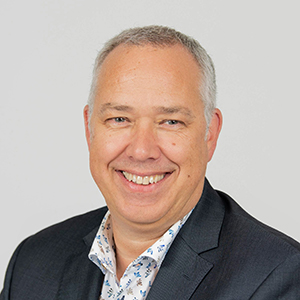The historic market town of Sudbury in Suffolk, southeast England is served by Anglian Water – the largest water and water recycling company in England and Wales by geographical area, supplying close to seven million people. The town’s water treatment facilities serve a population equivalent of 20,000, handling a wastewater flow of around 150 liters per second.
While this is largely comprised of domestic wastewater, the plant also imports septic tank and cesspit waste from surrounding villages that are not connected to the main sewer supply as well as processing trade effluent from local food manufacturing and engineering sites.
The plant’s treatment process is a conventional one, comprising:
- Screening and grit removal of incoming flow
- Primary settlement in two radial tanks (ferric sulfate dosed at inlet)
- Biological filtration
- Tertiary filtration (to meet tight ammonia consent)
- Final (humus) settlement
The challenges of high load variability and concentrated imported waste
Edwin Smith, Energy Optimization Engineer at Anglia Water, describes the unique challenges facing the Sudbury plant: “The site deals with an extremely variable load, particularly in the summertime when flows can be very low and sewage concentrations very high. This means when the town’s pumping stations begin discharging we can be dealing with high volumes of strong, sometimes very septic, sewage in a short space of time. When you add to that the imported septic waste, which is delivered in large loads via road tanker instead of flowing in smoothly via the sewage network, it can be challenging to buffer the load to make sure these spikes of high-strength sewage don’t affect water quality.”
From crude manual to smart automated chemical dosing
The Sudbury plant had been relying on a manual system to dose ferric sulfate, a coagulant used to remove phosphorus from wastewater, at the inlet to the primary settlement stage of the treatment process. “Sudbury was one of the first sites to have dosing installed,” explains Smith. “Dosing was controlled with a crude, manually controlled system that didn’t allow us to do much more than stop the dosing process during nighttime hours using an electric peg timer.”
As part of its quest to deliver better, more efficient, and more economical solutions for its customers and the environment, Anglian Water runs the Water Innovation Network (WIN) together with the not-for-profit organization Allia. Through the WIN, the company connects and engages with organizations and individuals who can offer potential solutions to its business challenges.
“Any optimization we can make to the dosing process translates into a huge saving for us in terms of both cost and our carbon footprint.”
“We are under immense pressure to control chemical dosing and chemical costs. Ferric sulfate is an expensive chemical and there are few sites manufacturing it in the UK, meaning availability can also be a challenge,” explains Smith. “Any optimization we can make to the dosing process translates into a huge saving for us in terms of both cost and our carbon footprint.”
Kemira’s Edwin Jonker, Commercial Specialist, Advanced Water Treatment, picks up the story: “In spring 2020 we submitted the KemConnectTM P solution for evaluation via the WIN, which provides access to Anglian Water experts. After I presented the solution and its potential benefits to the evaluation team in a remote meeting, they decided to pilot it at the Sudbury plant, being the plant with the most difficult wastewater inflow to handle.”
The KemConnectTM P algorithm doses the exact amount of coagulants required for chemical phosphate removal even under changing process conditions. The KemConnectTM platform enables 24/7 water discharge compliance and contributes to environmental protection at the best total cost of ownership.
Plug-and-play solution shows promising results
In the Sudbury pilot, all the equipment and materials needed for KemConnectTM P were delivered to the site in a compact mobile unit for plug-and-play installation. Prior to the solution being installed the site had been dosing ferric sulfate at a fixed level of 21 kg/hour in order to cope with the highly variable load of the incoming sewage.
“We are dosing far less chemical than before but we are getting a far lower level of phosphate in the process. This is because we’re only dosing the amount that we need to according to the incoming load.”
“The outcomes of the test have been extremely positive,” Smith says. “We are dosing far less chemical than before but we are getting a far lower level of phosphate in the process. This is because we’re only dosing the amount that we need to according to the incoming load.”
Sudbury’s consumption of ferric sulfate dropped by around 15% with the introduction of smart, data-driven dosing enabled by KemConnectTM P. “Previously we were overdosing when we didn’t need to be and underdosing at peak load times, but with KemConnectTM P we can react immediately to the varying loads. We have much better and much more stable phosphate levels lower down in the process and we are making a big saving on the amount of ferric sulfate that we are dosing,” Smith concludes.
In addition to lower phosphate levels, after introducing KemConnectTM P the ammonium levels in the final effluent at Sudbury have also dropped, falling to 1.2 mg/l from 2.3 mg/l. This indicates that the performance of the plant’s biological treatment process has also improved.
More sites to come for Anglian Water?
Following the highly positive outcome of the trial at Sudbury, it is hoped that Anglian Water will consider piloting KemConnectTM P for trials at some of its other treatment plants. The site’s current phosphate consent is 2.0 mg/l, but this will fall to 0.8 mg/l in the next asset management plan (AMP) period. “Thanks to KemConnectTM P the Sudbury site has proven to be able to achieve this new, stricter consent. The outcome of the test will be discussed and evaluated by the innovation team, who will then discuss with other sites about trialing KemConnectTM P as a possible solution for phosphate control,” says Kemira´s Stewart Measures, Account Manager for Anglian Water. “Because of its highly variable, often concentrated loads the Sudbury site is a great advert for what is possible with KemConnectTM P. In my conversations with Edwin at Anglian Water he remarked that if it works there, it will work anywhere, which sums up the technology perfectly for me!”




